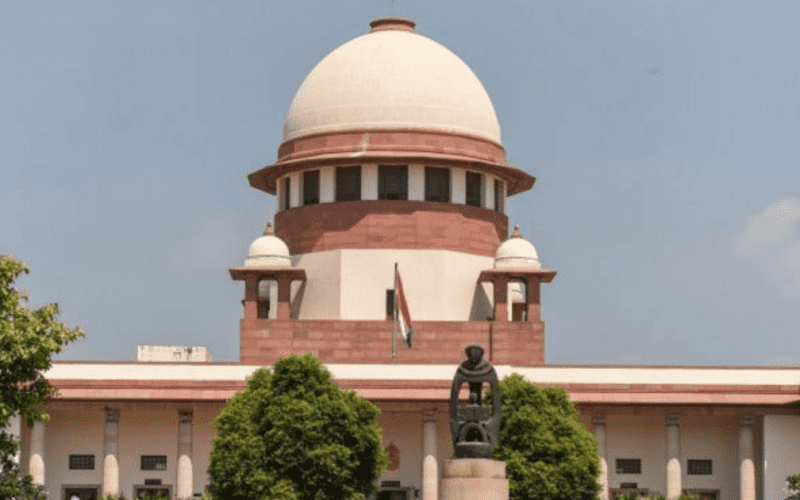VINEETA SHARMA V RAKESH SHARMA & ORS. (2020) 9 SCC 1

Author: Harshika Bhutda, a student at Symbiosis Law School, Hyderabad.
BACKGROUND HISTORY
Traditionally, only male lineal descendants were allowed to have coparcenary stake in a combined Hindu family. The Hindu Succession Act, 1956 (HSA) mentions coparcenary property and combined Hindu families. The HSA acknowledges the notions of coparcenary interest and handles succession-related issues. By birth, the male lineal is entitled to the property; in the event of the coparcener’s death, the remaining coparceners share the inherited property by survivorship. The daughters of a coparcener were granted the same rights to the coparcenary property as the son, according to the Hindu Succession (Amendment) Act of 2005. To give a precise interpretation of the amendment, the judiciary has been presented with a number of difficulties.
FACTS
In New Delhi yards, Sh. Dev Dutt Sharma purchased a 250 square metre plot of land from DLF Housing and Development Ltd. (henceforth referred to as suit property). The two and a half levels of the property were constructed by Sh. Dev Dutt Sharma. He settled into the first floor of the suit property with his family. Several tenants, including Bank of Baroda, leased the ground floor and a one-room flat built on the terrace. While the lawsuit was being settled, Shri Dev Dutt Sharma passed away intestate on December 11, 1999, following the filing of an eviction petition against the aforementioned bank. Vineeta Sharma, the appellant, brought a lawsuit to get a portion of the family’s ancestral land against many members of her family, including brother Rakesh Sharma. Mr. Dev Dutt Sharma, their father, had died before September 9, 2005. According to the 2005 change to Section 6 of the Hindu Succession Act, 1956, the High Court of Delhi ruled that the appellant was not entitled to the property. A Supreme Court appeal was later filed.
ISSUES
- Is it required by Section 6 of the Hindu Succession (Amendment) Act, 2005 that the father be living on November 9, 2005?
- Whether Section 6 is amended retroactively, prospectively, or retrospectively.
- Are women entitled to the same rights as males as coparceners?
PETITIONER’S ARGUMENT
The right of coparceners has been granted to the Daughters in order to equalise them with the Sons. The omission of this right would result in prejudice, the mistreatment of daughters, and the transgression of basic rights. The Hindu Succession (Amendment) Act, 2005’s Section 6 permits the daughters to use their coparcenary rights as of the Amendment Act’s inception; it is retroactive rather than retrospective. A coparcenary is a birthright even though the daughter acquired the right via birth. The girls became coparceners by birth on the day the Amendment Act went into effect, and they were responsible for the coparcenary property in the same way as if they had been sons.
The ruling in Prakash v. Phulavati, which stipulated that a coparcenary’s daughter had to be alive on November 9, 2005, the beginning date, overlooked the fact that coparcenary rights are innate. Therefore, it cannot be said that the Phulavati ruling established the right legislation. It is not a given that a coparcener’s daughter is also a live coparcener’s daughter. The coparcenary doesn’t cease with the death of the coparcener since it continues as long as the other coparceners are still living. Therefore, it is not necessary for the coparcener the daughter is inheriting from to be alive at the time of the beginning.
RESPONDENT’S ARGUMENT
Danamma vs. Amar and Prakash vs. Phulavati are not at conflict. The section 6 clause has been deemed to have potential applicability in both rulings. This is a possible amendment. The daughter is considered as a coparcener under the amendment Act, not because she was born before the amendment, as stated in section 6’s future assertion that the daughter will be a coparcener. The right decision was made in Prakash v. Phulavati. Daughters who are married are not regarded as members of their father’s joint family. Despite being acknowledged as class 1 heirs, they are not considered members of their father’s joint Hindu family. After getting married, a girl leaves her father’s household and joins their husband’s.
The Hindu Succession (Amendment) Act, 2005’s section 6(1) specifies that the daughter becomes a coparcener as of the act’s beginning date, November 9, 2005, by using the phrase “on and from.” In order for the daughter to succeed as a coparcener, she must have a surviving coparcener from whom she can inherit. This is because, upon the death of a coparcener, his interest would have merged with the surviving coparcenary, and as a result, there will be no surviving coparcener from whom the daughter can inherit. It is not possible for the daughter to contest a transaction that occurred before to December 20, 2004, and the daughter must still be alive on the amendment date. The daughter should be able to inherit the role of “living coparcener” and go on to become one herself.
JUDGEMENT
In this case, the bench of the Supreme Court cited a number of codified and customary Hindu legal concepts, including the concepts of the joint and patriarchal Hindu family, unobstructed and blocked legacy, and a litany of judgements. After looking into these matters, the Court recognised shared Hindu family property as unhindered cultural heritage. A person has the ultimate right to split this type of property simply by virtue of their birth. On the other hand, a separate property is an obstructed heritage, whereby the death of the separate property owner obstructs the right to ownership and partition. The right to inherit an impeded heritage rests on the original owner’s death rather than their birth. The Supreme Court observed these circumstances and concluded that, as the right to divide is a daughter’s birthright (unobstructed legacy), it makes no difference whether father Coparcener was alive or deceased on the day the amendment was passed. Consequently, the Court declared that the coparcenary rights transfer from the father to his surviving daughter rather than from a “living coparcener to living daughter,” overturning the Phulavati v. Prakash ruling.
Overturning the Phulavati & Danamma Judgement, the Court decided that although Section 6 of the Act is retroactive in character, its provisions are neither prospective nor retrospective in form. The Honourable Supreme Court clarified the meaning of prospective, retrospective, and retroactive laws by stating that the requirements derived from a previous event or a characteristic or occurrence that partially happened are what determine whether a law is applied retroactively. The Court held that because the right is conferred by birth, Section 6(1)(a) of the Act incorporates the definition of Mitakshara coparcenary’s unobstructed heritage (conferred by birth). As a result, the provision is retroactive since it applies to and from the date of the Amendment Act’s enactment. The Court also stated that Section 6’s clause 4 makes it clear that the provisions of the Section are not retroactive. The Court’s approach resolved the legal ambiguity.
ANALYSIS
The Vineeta Sharma ruling has removed any doubt regarding the law and demonstrated that the Hindu Succession Act’s change, which gives daughters the same right to inherit ancestral property, would apply retroactively. The court also believed that gender could not be used as an excuse to deny someone their inheritance rights since it would be against Article 14, which guarantees equality before the law. All of the uncertainty that was raised by the Phulavati and Danamma case has been satisfactorily addressed by this decision.
The Supreme Court reversed the High Court’s decision, issued a historic decision, and agreed on several legal aspects in Danamma, but it also partially overturned the High Court’s decision since section 6 of the decision is said to have prospective effect. The Hindu Succession (Amendment) Act, 2005 will apply retroactively, according to the highest court. The women’s rights on property were shown to have practical value by this judgement. In the same way as the son does, the daughter of the coparcener by birth will also become a coparcener. With regard to the coparcenary property, the 2005 amendment aimed to grant girls the same rights as sons. The Supreme Court overturned the rulings in Prakash v. Phulavati and Mangammal v. T.B. Raju. The ruling guaranteed that boys and daughters would be treated equally under the law in terms of succession.
The amount of property available for succession has significantly decreased in the modern Indian society due to rising poverty, social marginalisation, and job losses. Daughters living in households belonging to the propertied classes are significantly impacted by this judgement. The legal declaration of rights is predicated on the existence of both human and financial resources as well as the knowledge of those rights.
CONCLUSION
The Supreme Court’s interpretation of Section 6 is both agreeable and practical. As a result, following the 2005 law, a daughter cannot be categorised differently from a son. The Court clarified that the father does not have to be living on the date of the 2005 Amendment in order for the daughter to be able to claim her coparcenary privilege. In order to protect the rights of daughters in sham transactions that could be set up to display partition, the judgement also explains the rationale behind the adoption of a special concept of “partition” and holds that oral partitions and unregistered memorandums should only be considered in exceptional cases and after the discharge of a strong standard of proof.



